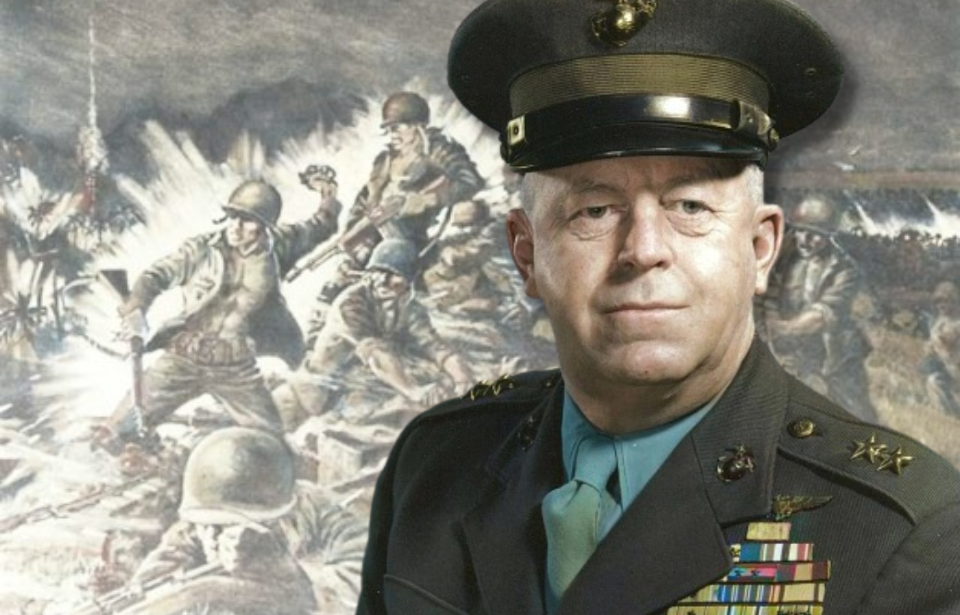After more than 24 hours of fending off a ferocious Japanese assault, the men of the 1st Marine Raider Battalion knew they were in for another night of assaults. The 830 Marines were preparing themselves to face over 2,500 enemy attackers in a few hours when Col. Merritt Edson stepped up onto a grenade box and addressed the group.
“You men have done a great job, and I have just one more thing to ask of you,” Edson said. “Hold out just one more night. I know we’ve been without sleep a long time. But we expect another attack from them tonight and they may come through here. I have every reason to believe that we will have reliefs here for all of us in the morning.”
The Marines did give Edson one more night and the Japanese more than they could handle. Seen on the battlefield that night by as he rallied and led them against the heavy fire, the men fighting that night would name the bloody ground for which they fought “Edson’s Ridge.”
Merritt Edson’s entry into the US military
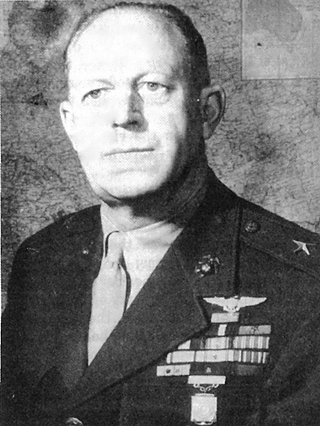
The military career of Merritt “Red Mike” Edson was a diverse one that saw him go from being a private in the Vermont National Guard to a major general in the US Marine Corps. He was born in Vermont in 1897 and joined the First Infantry Regiment of the National Guard in 1916.
Edson eventually returned to his college studies at the University of Vermont, and joined the Marine Corps Reserve in October 1917. He was commissioned a second lieutenant. Despite being sent to France with the 11th Marine Regiment, he didn’t see any combat during the First World War.
1st Marine Raider Battalion
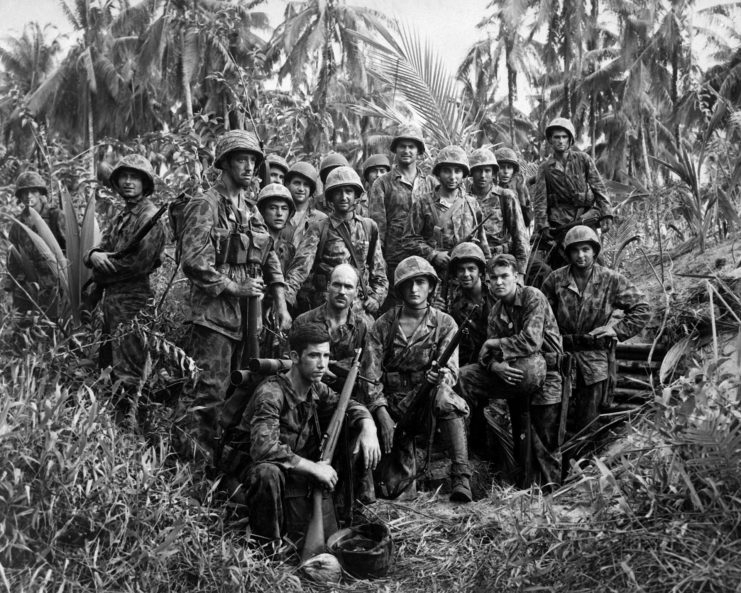
After World War I, Merritt Edson served in a variety of capacities, and eventually developed an interest in flight training, earning his wings in 1922. He served in the South Pacific out of the Marine Naval Air Station on Guam, where he got his first look at some of the tropical islands where hard-earned real estate would eventually bear his name. Physical reasons limited his ability to fly, however, and he eventually returned to ground duty.
Edson went on to command a Marine detachment, which went ashore in Nicaragua in 1928 and ’29. He experienced his first real action in combat, earning the Navy Cross for his leadership under enemy fire. He continued to serve with distinction in the 1930s, and World War II found him a colonel with the right skills and experience at precisely the right moment in history.
Edson was given command of the 1st Battalion 5th Marine Regiment, helping to train and mold them into what would become the 1st Marine Raider Battalion in early 1942. While he led his men through a number of engagements early in the conflict, it was a particular ridge of Guadalcanal where his place in US Marine Corps history was permanently enshrined.
Merritt Edson prepare’s his men for a fierce encounter
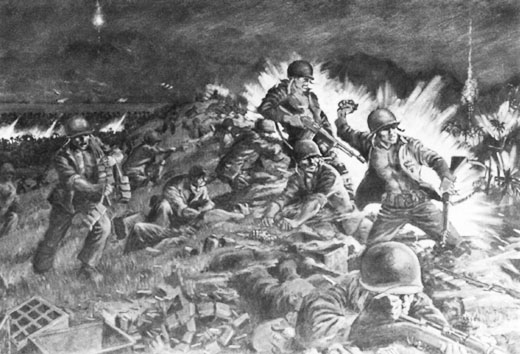
In August 1942, the Americans landed on Guadalcanal and captured a Japanese airfield under construction, which later became Henderson Field. The Japanese wanted it back, which meant the next few months saw ferocious fighting.
Merritt Edson’s 1st Marine Raider Battalion endured much of this combat. On the evening of September 12, they were sent to a reserve position near Henderson Field, where they were expected to get some rest. An unexpected Japanese attack that evening ruined any such plans, as the Marines, once again, battled for their lives.
With part of the positions overrun, Edson withdrew his men to a ridge line approximately 400 yards to the south and gave them orders to prepare for its defense. It was here he gave the Marines the encouragement to hold out one more night, giving them time to mentally and physically prepare for what was to come.
Battle of Edson’s Ridge
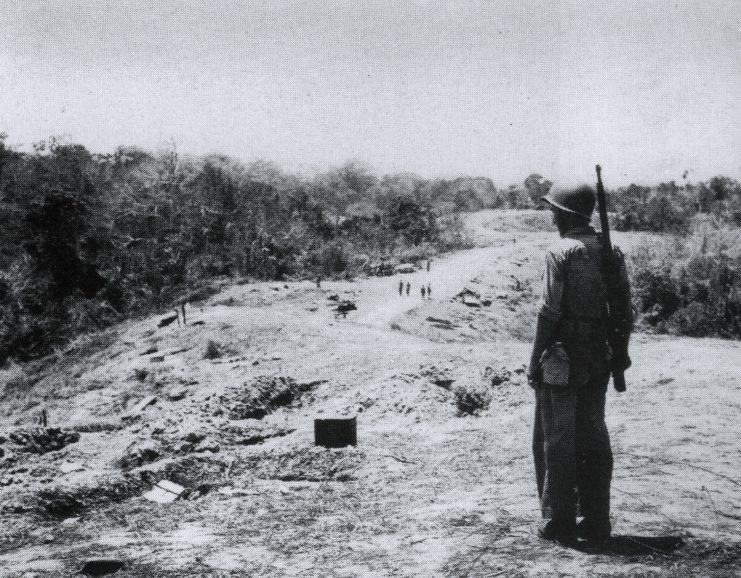
Just as expected, nearly 2,500 Japanese soldiers poured out of the jungle and assaulted the 830 Marines with everything they had. Initial successes in the Japanese assault led to some Marine positions being overrun and their flanks dangerously exposed. One officer later recounted, “The Japanese attack was almost constant, like a rain that subsides for a moment and then pours the harder… When one wave was mowed down – and I mean mowed down – another followed it into death.”
As portions of the 1st Marine Raider Battalion began to withdraw, they ran into Merritt Edson, who was never short of the right words to say as he rallied them to prepare the defense around Hill 123. It’s often said that his men would follow him anywhere, and their only problem was keeping up.
Throughout the night of September 13, Edson was always be seen just 20 yards behind the front firing line, rallying his Marines and organizing their defense. At times, when other Marines could be seen hugging the ground, the brave colonel exposed himself to dangerous fire, in order to single-handedly save the battalion.
The morning after the intense engagement
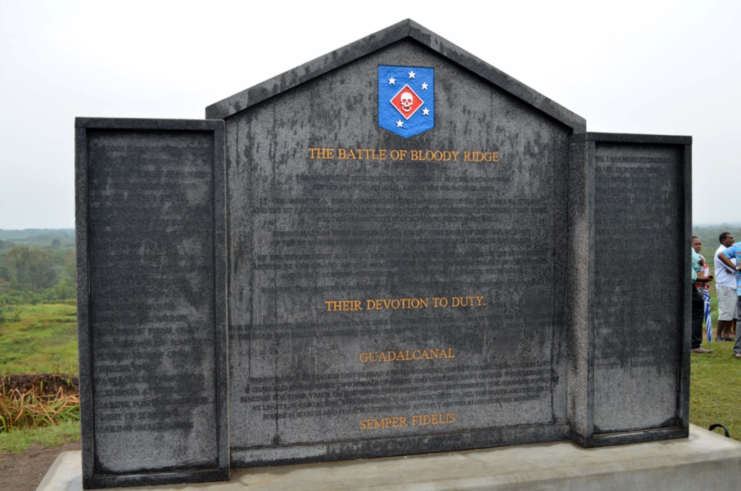
As day broke the next morning, Merritt Edson’s Marine were still in command of Hill 123, the Japanese assault was repulsed. The world often refers to this particular ridge as “Bloody Ridge,” but those who fought there only referred to it as Edson’s Ridge, given how much their commander was determined to defend it.
For his actions and leadership under constant fire, Edson was awarded the Medal of Honor and the respect of every man who saw him in action. He went on to serve with distinction throughout the rest of the Second World War and even picked up his first star to become a brigadier general. He retired from the Marine Corps in 1947 as a major general, and continued to serve the nation in various civil capacities.
More from us: How Canadian Paratroopers Prevented the Soviet Red Army’s Westward Advance
In addition to his personal awards for gallantry in service, the USS Edson (DD-946), a Forrest Sherman-class destroyer, was commissioned in his name, along with a portion of Camp Pendleton, where Marine recruits learn the skills of marksmanship.
